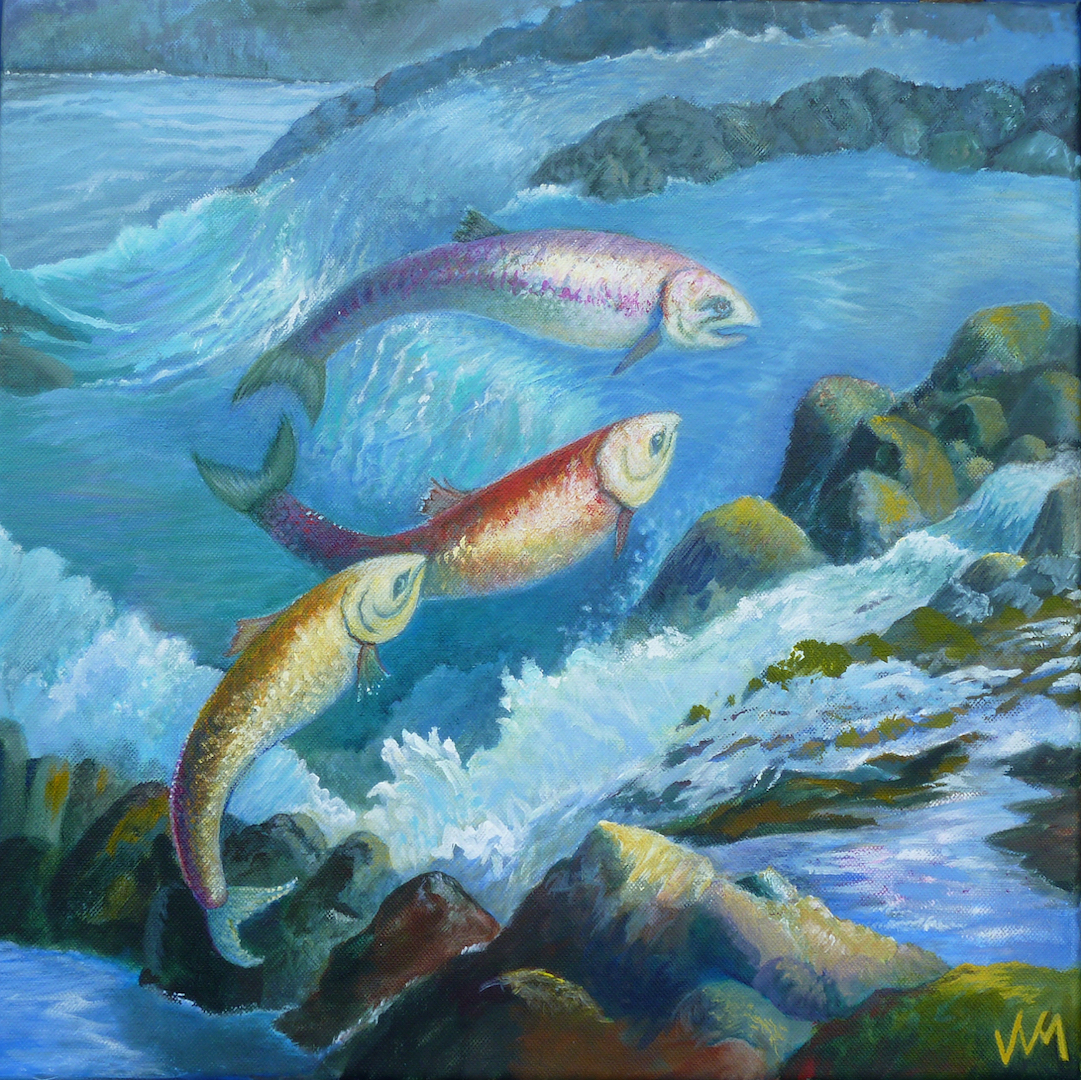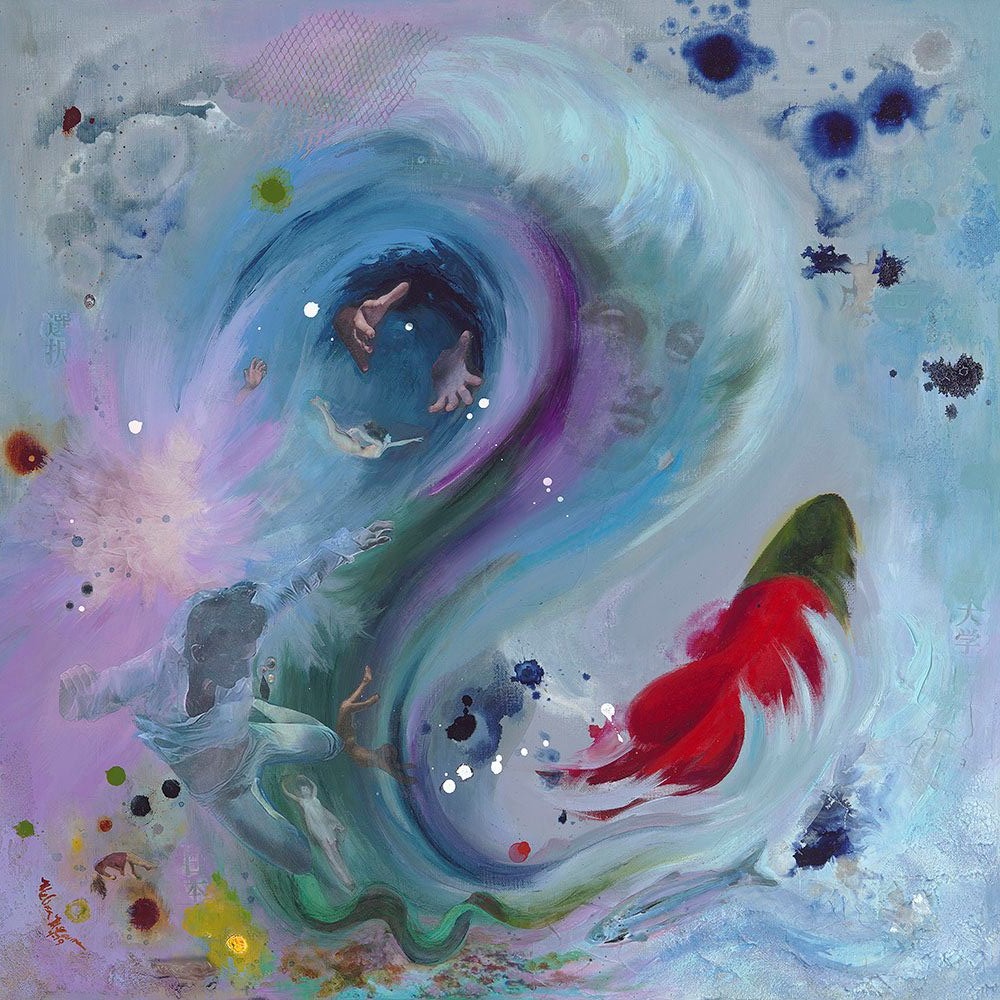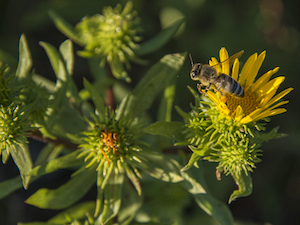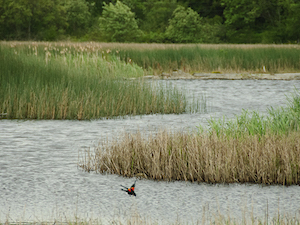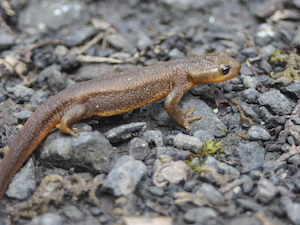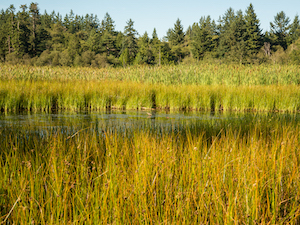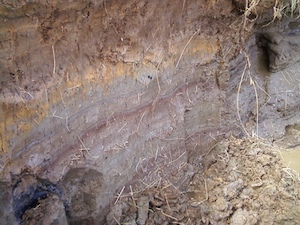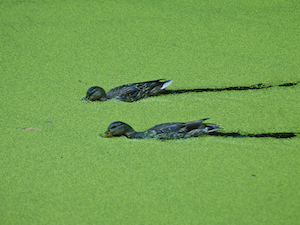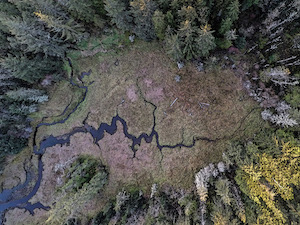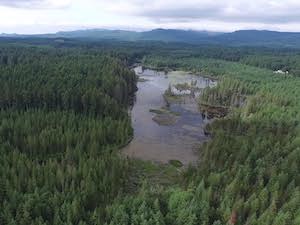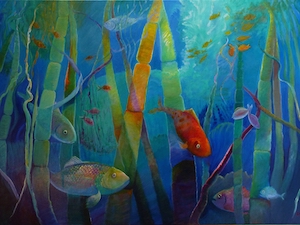ART & POETRY
Autumn 2020
Juan de Fuca painting by Melissa McCanna
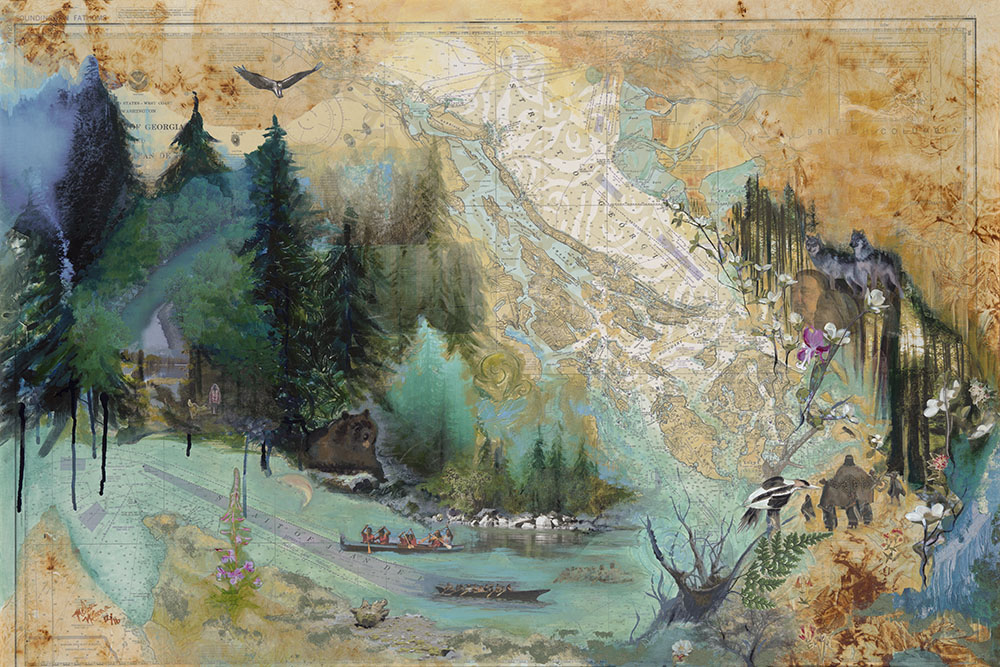
Juan de Fuca painting by Melissa McCanna
ART & POETRY
Summer 2020
Coming Home
by Dawn Henthorn
Salmon come home
home to the Elwha.
Bit by bit of rubble
two feet at a time,
the dams were removed,
and the river found its way again.
Gently, with reverence,
salmon are returned
to these ancestral
spawning grounds
by Elwha’s native people.
Home after one hundred years—
88 pebble nests in
the stream bed cleared by
these first mothers’ bodies
the roe given life by
these first fathers.
Now we wait
wait for the small fry
to wiggle free of egg sacs,
grow strong in the shallows
of river’s edge, of eddies,
swim out to the sea
and back again.
Salmon have come home.
Home to the Elwha.
Salt and Other Spells
By Sarah Stockton
We were water once
cyclical, transforming
salt and sediment into scales
anadromous/
moving from sea into sweet water
catadromous/
fresh to salt
to spawn/ travelling
in deep sea channels
transitioning/
from silvery blue
to darker, going home
as we, floundering at water’s edge
turn in four directions/
three visions/ seven cycles
scrying into water
(originally published in Luna Luna Magazine, November 2019)
Short Songs for the Spring Peepers
Pseudacris regilla
––By Tim McNulty
Most years, it’s the white
tassels of Indian plum blossoms
turn back winter.
But this year, and last,
the songs of the treefrogs.
Spring mountain night
bursts awake with a thousand voices.
Treefrogs looking for friends.
My daughter loves catching them,
hates letting them go.
In the darkened cave of her
cupped hands,
those wide, copper-gold eyes.
Sound of a midnight truck
grinding up the mountain road
and the treefrogs fall silent.
We wake into absence of their singing,
like stepping off into a ditch.
Ice still rimes the pond-edge
and the valley grows white with frost.
But the treefrogs are having none of it.
After love, the storm
of our breathing subsides
into a deafening chorus of frogs.
Were they there all that time?
I tell Caitlin
the sticky pads on their
tiny white toes
are for hugs.
Asleep beneath a warm
forest-green quilt,
they coax our dreams
out into the dark wet hollows.
Full moon
over a late-season fall of snow.
A single treefrog
cannot contain himself.
Breathing your warmth,
the light hair at the back
of your neck.
I know what they’re saying,
the treefrogs.
In daylight, they change hue,
meld with whatever shade surrounds them
as easily as a congressman.
There’s a flatter, single-note song
for rainy summer days
after mating season,
but no one seems to listen.

Treefrog photo by Adelia Ritchie

Melissa McCanna’s abstract and narrative paintings explore concepts of heritage and the illusory veil between the natural world and our manufactured world. Her inspiration includes the Pacific Northwest, Mexico and contemporary issues. She uses acrylic paint, paper, photographs and ink. Her studio, Kingston Artist Tree, is in Kingston, WA. Melissa teaches classes there, and conducts painting events called “Art Flights.”
Her work can also be viewed at Front Street Gallery in Poulsbo, WA. http://www.melissamccanna.com/
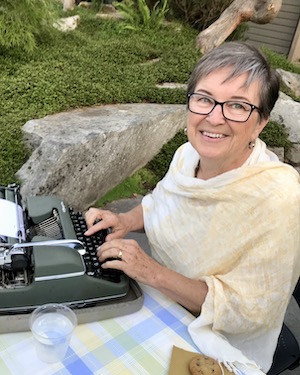
As a child growing up on Kodiak Island in Alaska, Dawn Jarvela Henthorn explored tide pools, climbed trees, rolled around in foot-thick moss, snacked on salmonberries, Nootka rose-hips, seaweeds, and limpets. This playground of beaches, wetlands, cliffs, woods, wildlife, left its indelible mark on her art, writing, and personality. She says, “Until urged by my writer friends it never occurred to me that I could write. In fact, I always stood in awe of those who could.” Her sculptural art in soapstone and clay represent the feelings and movements of these childhood surroundings. Over the years, her poems have been exhibited in Ars Poetica, in Poetry Corners, at BPA, the Bainbridge Island Library, and at Mud Puddle Coffee, along with her photos of the devastation from the 1964 earthquake in Kodiak.
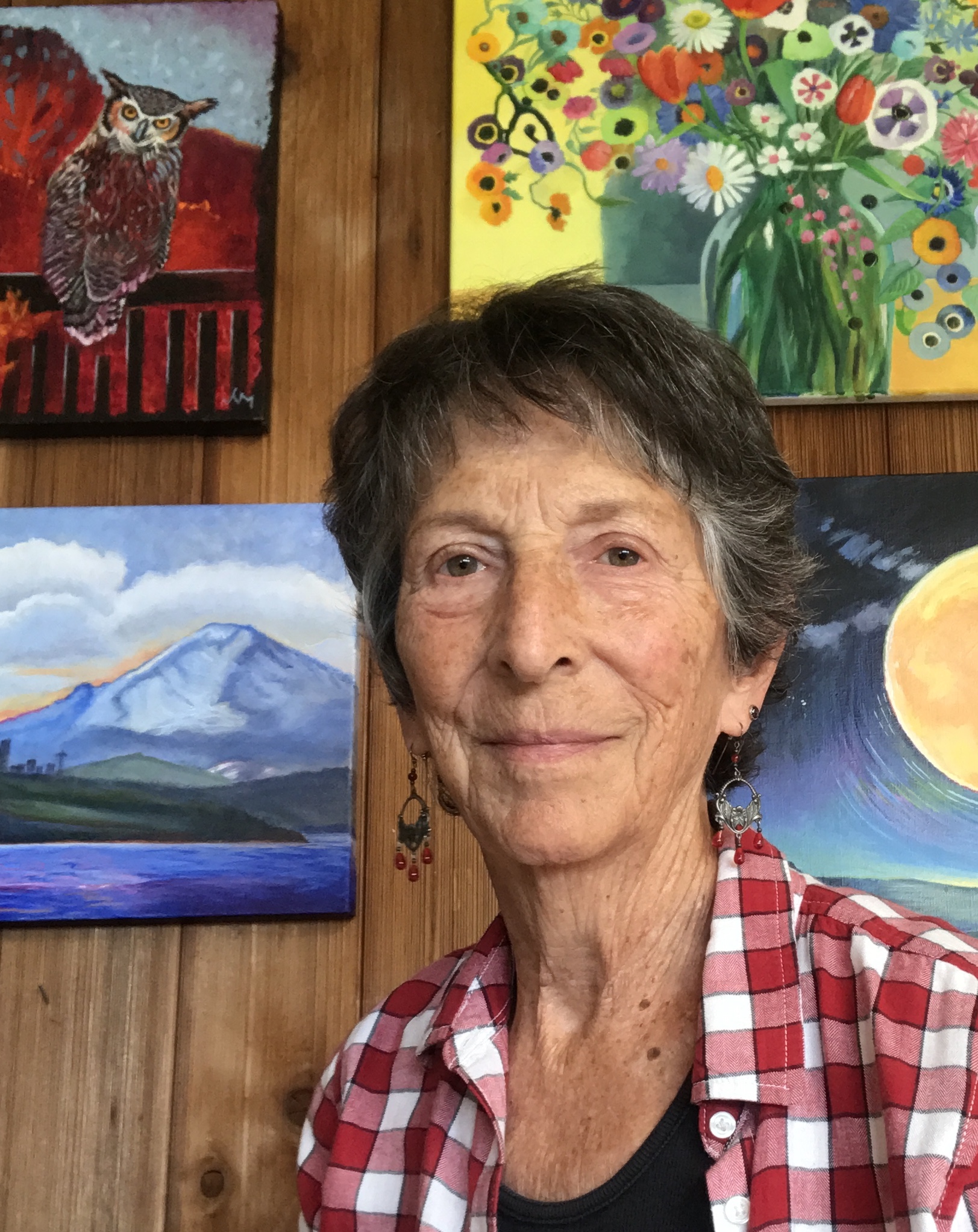
Julia Miller (Julia V. Miller Fine Art) likes nothing better than exploring a quiet forest or scrambling over a rocky beach. Her artwork expresses the delight she finds in the natural beauty of the Pacific Northwest. Born and raised in the Seattle area, a University of Washington graduate, the Kitsap peninsula is now the home of her dreams.
Julia began painting after leaving a long stint as a popular natural foods restaurateur. She describes her painting style as “unhampered by formal training” and her work has been called “color poetry.”

Sarah Stockton is the Editor-in-Chief of River Mouth Review, an online, bi-monthly poetry review. Sarah’s own poems have been published in print and online, including in Glass Poetry, The Shallow Ends, Rise Up Review, Crab Creek Review, Empty Mirror, SWIMM, Psaltery and Lyre, and Earth’s Daughters, among others. Her work has been nominated for a Pushcart prize. Workshop participation with the Centrum Writer’s Conference, Blue Light Press, and The Writers’ Workshoppe in Port Townsend, WA, have been a fruitful adjunct to a life-long love affair with poetry.

Tim McNulty is a poet, essayist, and nature writer based in Washington’s Olympic Peninsula. He is the author of ten poetry books and eleven books of natural history. Tim has received the Washington State Book Award and the National Outdoor Book Award among other honors.
Tim’s most recent book of poems, Ascendance, is published by Pleasure Boat Studio. His natural history books include Olympic National Park: A Natural History, and Washington’s Mount Rainier National Park. His work has been translated into German, Chinese, and Japanese.
Tim lives with his wife, Mary Morgan, in the foothills of the Olympic Mountains above the Dungeness and Graywolf rivers. A passionate spokesman for the wild, Tim remains active in the Northwest environmental community.
Table of Contents, Issue #9, Autumn 2020
From Swamps and Bogs …
by Sara & Thomas Noland, Autumn 2020 Photos by Thomas Noland except as notedby Sara & Thomas Noland, Summer 2020 Photos by Thomas Noland except as notedWetlands are part of our landscape here in the lowlands near the Salish Sea. Anyone who’s walked around in a...
Salt Marshes
by Ron Hirschi, Autumn 2020Gumweed photo by John F. WilliamsGumweed photo by John F. Williamsby Ron Hirschi, Autumn 2020I’ve enjoyed, studied, mapped, and tried to protect wet places for pretty much my entire life. So, I thought I’d take the opportunity to share some...
Importance of Wetlands
by Josh Wozniak, Autumn 2020 Photographs by John F. Williamsby Josh Wozniak, Summer 2020 Photographs by John F. WilliamsTaking many forms, wetlands are natural features of the landscape that provide crucial functions for both nature and humankind. We benefit directly...
Newts: Wetland Magicians
by Sharon & Paul Pegany, Autumn 2020 Photos by Sharon Pegany except as notedby Sharon & Paul Pegany, Summer 2020 Photos by Sharon Pegany, except as noted. Did I just see what I think I saw? I had to do a double take while exploring the edge of a local pond...
Healthy Wetlands
by Curt Hart and Marcus Humberg, Autumn 2020Wetland at Point No Point, photo by John F. WilliamsWetland at Point No Point, photo by John F. Williamsby Curt Hart and Marcus Humberg, Summer 2020For the 4.2 million residents in and around Puget Sound, there is a good...
Earthquakes and Tsunamis
by Carrie Garrison-Laney and Ian Miller Autumn 2020 A photo of sediments in the coastal marsh near the mouth of Salt Creek on the Strait of Juan de Fuca, showing distinct bands of different colors and textures. Photo by Ian Miller.A photo of sediments in the coastal...
10 Things About Duckweed
by Adelia Ritchie, Autumn 2020 Photos by John F. Williams, except as notedby Adelia Ritchie, Summer 2020 Photos by John F. Williams, except as noted1. Duckweed grows in dense colonies in quiet water that is undisturbed by wave action. We try to avoid insulting still...
Carpenter Creek Salt Marsh
by Melissa Fleming & Terry Pereida, Autumn 2020 Photos by Terry Pereida, except as notedSalt marsh with the main channel running down the middle. Photo by Tom TwiggSalt marsh with the main channel running down the middle. Photo by Tom Twiggby Melissa Fleming &...
Wetland Basics
Frank Stricklin, Autumn 2020 Photos by John F. Williams except as notedThis large wetland in Newberry Hill Heritage Park is listed by the State of Washington as a “wetland of significant conservation value.” It contains many species of aquatic plants, and some...
Blue Carbon
by Adelia Ritchie, Autumn 2020Underwater Rainbow, painting by Julia MillerUnderwater Rainbow, painting by Julia Millerby Adelia Ritchie, Summer 2020As you’ll see everywhere else in this issue, a wetland system isn’t just another lovely place for a nature walk. Wetland...
PLEASE HELP SUPPORT
SALISH MAGAZINE
DONATE
Salish Magazine contains no advertising and is free. Your donation is one big way you can help us inspire people with stories about things that they can see outdoors in our Salish Sea region.
We also don't advertise Salish Magazine, so please spread the word of this online resource to your friends and colleagues.
Thanks so much for your interest and your support.
We also don't advertise Salish Magazine, so please spread the word of this online resource to your friends and colleagues.
Thanks so much for your interest and your support.

